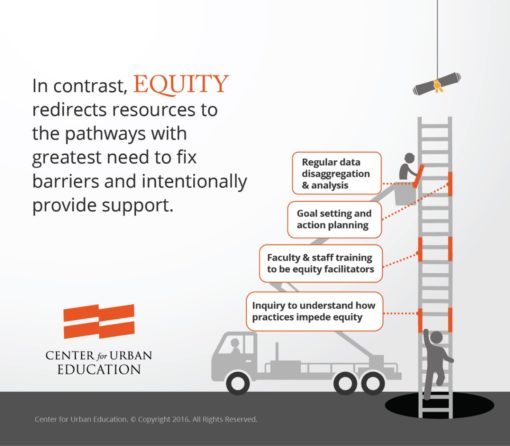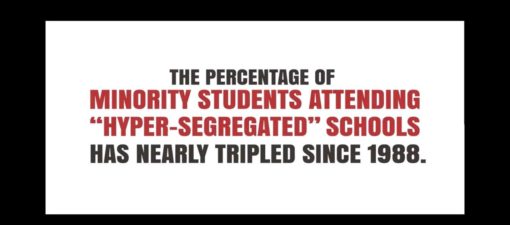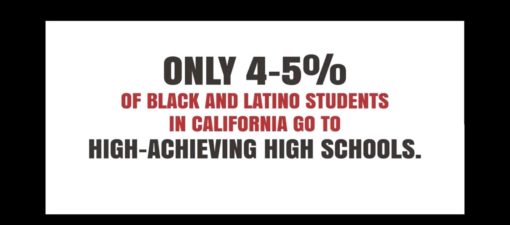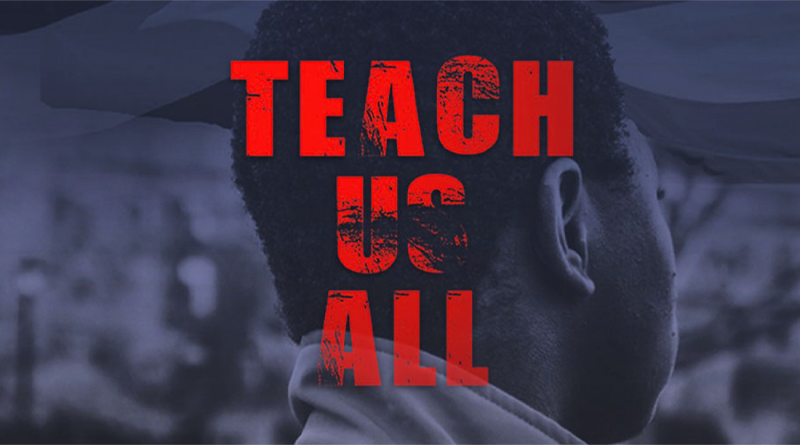These thoughts were written by Myla, one of our 2020 summer interns. The opinions expressed herein do not reflect those of Civitas other than respect for the value of open dialogue.
The Netflix documentary, Teach Us All, addresses the inequity in America’s educational system. When it comes to equity vs equality, the terms are often confused. Equality is giving everyone the same rights, opportunities, and resources. Yet, equality does not address the specific needs of minority students. For example, giving all students an ACT prep book would not address the students who cannot afford a tutor. Even if the students receive the same resources, some students may still struggle. Equity provides people with resources that fit their circumstances.



In 1954, the Supreme Court ruled in the case of Brown v. Board of Education that segregation in schools was unconstitutional. The film begins with the story of the Little Rock Nine. In September of 1957, a group of African American students began to integrate an all-white school in Little Rock, Arkansas. A mob of white segregationists gathered to prevent the students from entering into the school. The crowd used racial slurs, weapons, and physical force to intimidate the students. Governor Orval Faubus called out the National Guard to maintain order. He said, “they will not act as segregationists or integrationists.” However, they were there to block the black students from entering Little Rock Central High School. As a result, the event made national news. Later that month, President Dwight Eisenhower sent in the federal troops to escort the Little Rock Nine into the school. He took federal control of the Arkansas National Guard. When the students could finally enter the school, it was a monumental event in United States history. The Little Rock Nine paved the way for future generations of African Americans. By the end of the school year, Governor Faubus closed all public schools in opposition to desegregation. When the next school year began, private schools used public taxpayer funds to accommodate the city’s white students. African American students were left with no formal education. Many never returned to school and joined the military or found a job. This time period is known as ‘The Lost Year.’ When Little Rock reopened, only two of the nine students returned to the high school. Nearly 63 years later, the disparities in education are still one of the most pressing issues in America. The percentage of minority students attending “hyper-segregated” schools has nearly tripled since 1988.

Teach Us All focuses on three cities in the United States: Little Rock, New York City, and Los Angeles. Little Rock, Arkansas is best known for its crucial role in Civil Rights history. While segregation may be legally prohibited, the city still has a long way to go. In 2015, The State Board of Education replaced the school board due to the school district’s lack of improvement. This decision alarmed the African American and Latino communities because the school board was majority black. Therefore, the state’s takeover was perceived as a racially motivated decision. The largest school district in Arkansas would be controlled by three people. A group of plaintiffs led by civil rights attorney, John Walker, decided to sue the state. Unfortunately, the Arkansas Supreme Court ruled that the state was immune from any lawsuit regarding the state takeover. Since then, the Board of Education has officially decided to reinstate the local school board in the month of November, 2020. However, the state has placed restrictions on the school board. They cannot file a lawsuit against the state, cannot negotiate with the teacher’s union on a contract, and cannot fire the superintendent. Unfortunately, history seems to repeat itself. In March 2020, three plaintiffs filed another lawsuit against the Board of Education for these restrictions. In my opinion, Little Rock’s history of racism continues to prevent the city and school district from moving forward.
America’s melting pot, New York City, contains 1.1 million students of different races, cultures, and languages. Unfortunately, it has the most segregated schools in the US due to discriminatory housing policies. The city tries to combat this issue by providing students and their families with school choice. After 6th grade, students can apply to any school across the city. However, this process has never been beneficial to black and Latino students in mass. The success of this method relies on more parental involvement. As a result, this is more likely to benefit upper- and middle-class parents who can take off of work more often. Unfortunately, most minority parents do not learn or understand the admissions process. For example, high school student, Hebh Jamal has a one hour and twenty-minute commute to her school. She chose her school because it has one of the highest graduation rates in New York City. She completed the entire admissions process by herself. When her parents realized that her school is across town, they were upset. However, Jamal believed that the schools in her neighborhood lacked quality education. Many residents of New York only blame the disparities in education on money. Whereas the film refers to these inequalities as double segregation based on race and income.
Los Angeles, California is the center of America’s entertainment industry. A nickname for the city is La-La Land because it is considered a fun place that is out of touch with reality. Unfortunately, the students who reside in this area do not have that perception. Every day is a struggle. Los Angeles Unified School District (LAUSD) is the 2nd largest public-school district in the country. With more than 100 neighborhoods and more than 20 individual cities, the public schools are continuously losing money. Over 80 percent of the student population lives in poverty. Therefore, students in Los Angeles have the highest exposure and concentration of trauma in the country. With the presence of school resource officers, black and Latino students feel even more marginalized. Many are suspended for the tiniest, nonviolent offenses. Since 1972, the probability of being suspended has doubled for minority students. As a result, the school-to-prison pipeline seems inevitable. Unfortunately, one out of three black males is expected to go to jail or prison. While one out of six Latino males is expected to go to jail or prison.

Los Angeles alone spends about $233,600 a year to incarcerate a juvenile. If you divide that number by 12, the amount is about $19,466 a month. This is a huge difference from the amount spent on educating students. The city only spends about $9,000 per student.
Interestingly enough, California was the first state to be integrated due to the state’s Supreme Court decision on Mendez v. Westminster in 1946. The court ruled that separating Mexican American students into separate schools was unconstitutional and unlawful. Today, students are more segregated than in 1947.

More than half of K-12 students are Latino. Sadly, only 4-5 percent of black and Latino students attend high-achieving schools. One-third of LAUSD students are English-language learners, who face triple segregation based on race, income, and language. Often, these students are separated from their native English-speaking classmates. Minority students feel like the education system is stacked against them. In order to combat this sense of hopelessness, some schools have created dual language programs. Half of the students are native English speakers and the other half are native Spanish speakers. The children in these classes teach each other their language. These students have a great advantage because they will become bilingual speakers. In the future, jobs will consider them to be more desirable candidates. Therefore, the education system should treat Latino students as assets and not threats.
According to the film, the United States is one of the few countries in the world that systematically and deliberately spends less money to educate poor children than affluent children. If we want to be a country that prides itself on the ideals of equality, diversity, freedom, and change, we need to reform our education system. Parents, teachers, and students need to demand change.


Pingback:Index of 2020 Intern Student Blog Posts - CIVITAS-STL